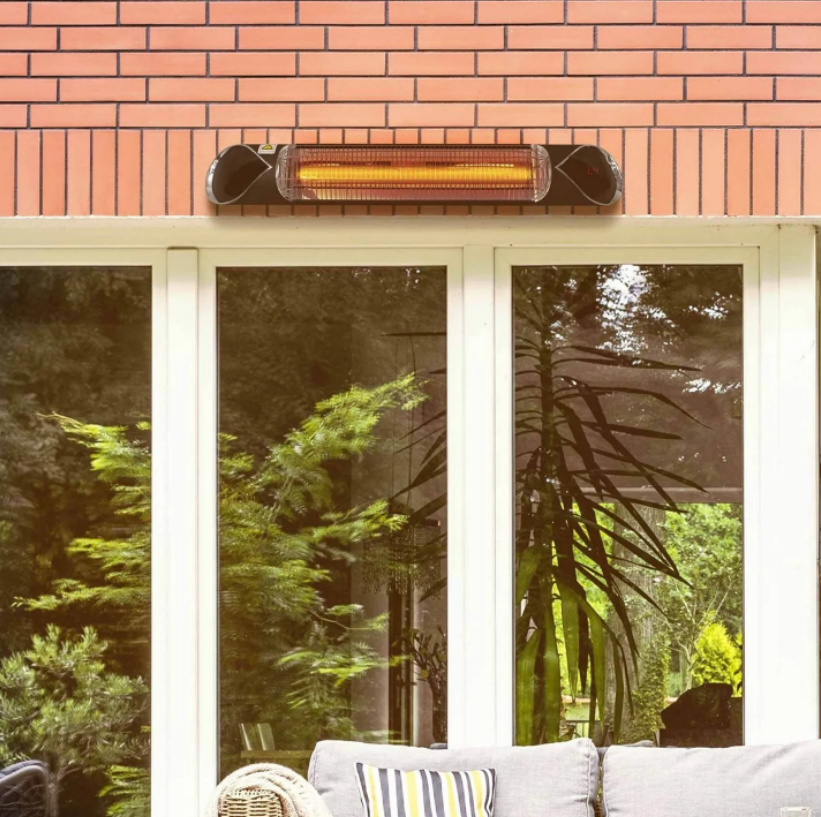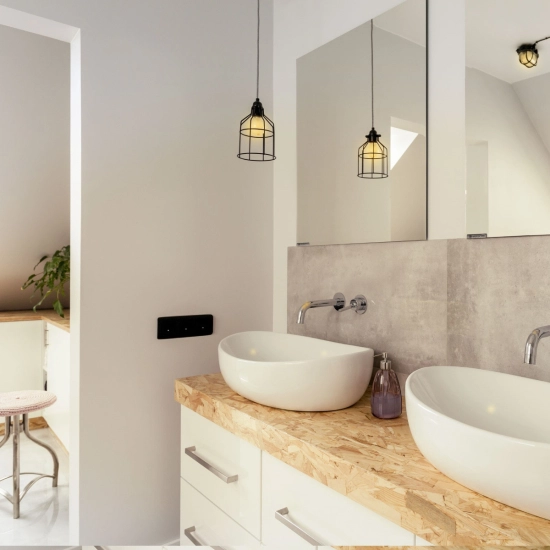With the high running costs of electricity, you might be hesitant about installing infrared heaters in your home or business. Let us put your mind at ease – infrared heaters are incredibly efficient. In fact, they’re designed to use as little energy as possible while still keeping your space comfortable. So, let’s dive into exactly how much electricity infrared heaters use and what you can do to keep your energy usage to a minimum.
How much electricity do infrared heaters use?
The short answer is the most obvious one: the amount depends on their wattage and the amount of time they run for.
The long answer might leave you scratching your head if you don’t know how infrared radiation works. After all, it seems unlikely a heater that uses 100% electricity wouldn’t leave your electric bill sky high. However, the not-so-secret trump card of infrared heaters comes down to what they actually do with the electricity they convert.
The efficiency of infrared radiation

Using radiation as a sole method of heat transfer makes infrared heaters one of the most efficient and cost-effective solutions on the market. Why? Infrared is focused on heating objects directly, rather than relying on the circulation of air. Since heat won’t get lost to draughts or ceilings like it would with a convection-based system, infrared heaters can emit the same level of warmth using less power.
As a testament to their efficiency, it’s less likely that infrared heaters will have to work at their full wattage. If the space you’re trying to heat is well insulated, it’s more than possible your infrared heater will only have to run at a third of its output, helping you to keep energy usage to a minimum without any compromise.
Do different types of infrared heaters use more electricity?
Different types of infrared heaters don’t inherently use more or less electricity than each other, despite their varying heating technologies and recommended applications. For obvious reasons, heaters that are placed outdoors or in a large space will need to run at a higher wattage. However, the only way you might end up using more electricity than necessary is if you’ve installed the heater in an unsuitable location, have a space with poor insulation, or you’ve chosen too small a wattage.
Here’s a quick rundown of the three types of infrared heaters and which applications and wattages they’re best suited to:
- Infrared panels – Infrared panels are a discreet and versatile heater primed for indoor use. Available in lower wattages, they’re designed to run throughout the day using minimal electricity without the need for temperature top-ups.
- Quartz heaters – The quintessential outdoor heater, they use shortwave infrared to deliver robust warmth within seconds of switch-on. These heaters usually come in higher wattages but are designed for short-term use when instant heat is required.
- Ceramic heaters – Ceramic heaters are designed to emit heat over a larger surface area, like a warehouse or sports hall. They typically come in mid to high wattages to provide durable, long-lasting warmth for these otherwise hard-to-heat spaces.
How much do infrared heaters cost to run?
If you’re interested in having a ballpark figure for the running costs of an infrared heater, there’s a simple way to find out. Say you have the 700w Ecostrad Accent iQ wall panel and you want to run it for 6 hours a day. Using a DIY calculation, you can work out the approximate running cost for a day’s use, taking into account that it might only need to use a third of its full wattage:

- 0.7kW x 6 hours = 4.2kWh
- 4.2kWh x 34p = £1.43
- £1.43 ÷ 3 = 48p per day
Of course, your unique living situation and the cost of electricity in your area will affect these figures. For everything you need to know about calculating the running costs of infrared heaters, check out our dedicated blog.
If you’re unsure of the wattage you might need for your space, be sure to use our infrared room calculator for a general recommendation. If you’d prefer to get in touch with our expert heating consultants, we also offer a no obligation free quote to help you make the right choice.
Why infrared heaters save energy
Inherent to their design, infrared heaters are primed to save energy, helping to reduce your heating costs and carbon footprint:
Radiant heat warms objects directly
Infrared radiation travels directionally and is absorbed by the objects, walls and people in its path. As a result, the room is warmed directly without relying on the air, which can be lost to draughts or cold spots. By focusing on warming objects directly, infrared heaters provide more targeted heating which maintains comfort levels easier and longer than convection heaters.
100% efficient at point of use
Infrared heaters get their power directly from the mains, so there are no system losses like you’d find in a fuel-based system. As they convert every watt of energy into radiant warmth, you’re never paying for waste.
360-degree heating
The objects in the heaters’ path retain the heat and radiate it back into the room, creating a consistent and even distribution of warmth. With less energy being wasted on having to top up the heat, you’re effectively turning your room into a 360º heater. Subsequently, you can set your thermostat lower than you would usually and enjoy significant savings as a result.
Zoned heating
Due to their direct heating method, you can target specific areas without wasting heat on every corner of the room. If you have a larger or awkwardly shaped room, you can strategically place multiple heaters towards main living areas, for targeted heating without overspill.
Energy-saving manufacturing
Infrared heaters are manufactured with efficiency in mind, built using the highest-quality materials and techniques to consume as little electricity as possible:
- Our bestselling Ecostrad infrared panel range benefit from a fire-resistant coating which increases insulation and results in a superior transfer of heat.
- The Ecostrad Thermaglo electric patio heater uses aluminium reflectors within its housing to help project heat outwards and reduce light emissions.
- Our selection of glass and mirror infrared panels benefit from being highly reflective, helping to direct heat out into the room whilst cleverly disguising their original purpose.
- Technotherm infrared panels are made using top-of-the-line German heating technology. Fitted with a unique Matrix Heat Mat, they’re able to accommodate up to 10x more heating wire than other brands to ensure reliable warmth across all their products.
How to save energy with smart infrared heaters
As you can see, the default standard for infrared heaters is to use as little electricity as possible while in operation. However, there is a way to take this further: our range of smart infrared heaters are the best way to keep your energy usage down. Not only do they benefit from greater efficiency, but they give you far more variety when it comes to heat management.
- Precision digital thermostat – An integrated thermostat that monitors the temperature of the room, proactively cutting power or increasing the heat to ensure comfort levels match your preferences.
- Open window detection – If the temperature drops more than 2°C in a 5-minute period, the heater will pause its programming until heat levels stabilise.
- Adaptive start – Your infrared heater will pre-heat for a specific time, so you can schedule your heating to the exact moment you need it.
- 24/7 programming –Align your heating with your routine and prioritise rooms that see the most use, for scheduled heating without the waste.
- WiFi app & voice control – Pair with a sophisticated heating app for optimal control. Many can also be linked with Amazon Alexa & Google Home, allowing you to manage your heating without lifting a finger.
- Renewable energy pairing – Invest in solar panels and save money over time by generating your own clean electricity. As more research goes into renewable energy, green tariffs are also set to decrease in the future.
Take control of your electricity usage with infrared heaters
Efficient, cost-effective and zero-maintenance, infrared heaters excel in delivering comfortable warmth to both indoor and outdoor settings – without the risk of using too much electricity. So, if you’re looking to give your home or business a heating overhaul, browse our full collection of infrared heaters today and discover just how much you can save.






One Response